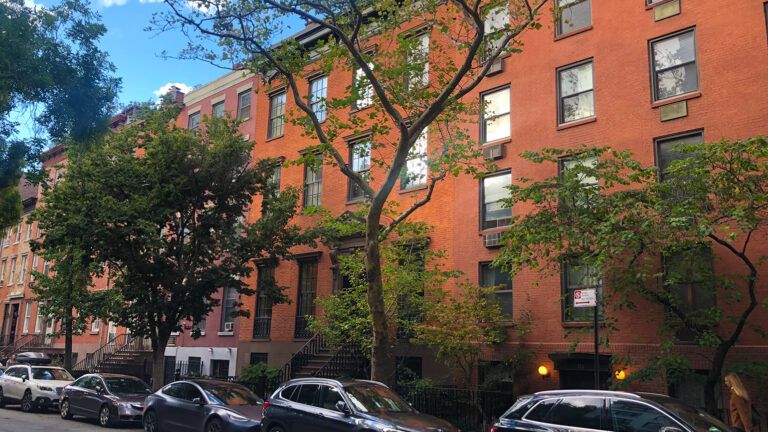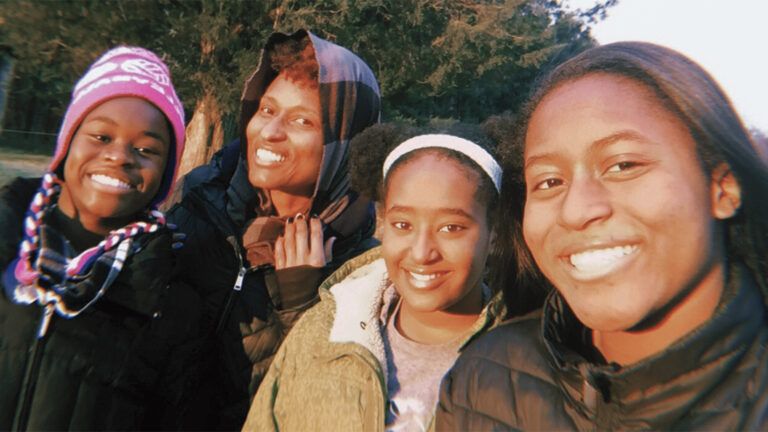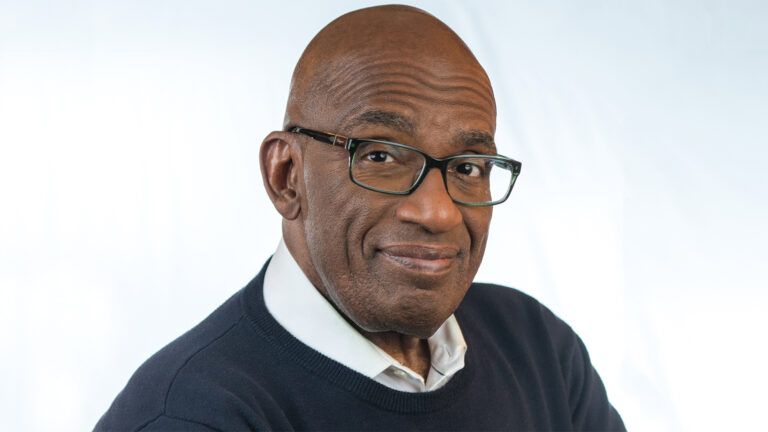How did I know I was meant to be a makeup artist?
Well, sometimes the course of your life can be clarified in an instant, a single transcendent moment when you discover how your God-given gifts can make a difference for someone else. A light goes on, something clicks inside. Your path is clear.
That’s what happened to me at the Westminster Mall in southern California when I was 18.
I was working at Merle Norman Cosmetics, doing makeovers, showing women how they could look their best. A flattering shade of foundation, a little eyeliner, a different blush, a bit of reassurance, and they could see themselves with new eyes.
Of course, I was supposed to sell Merle Norman products too, but I ended up more interested in the women themselves.
Women of all different ages and backgrounds would walk in and take a seat at my counter. “How can I help you today?” I’d ask.
I could see their finest features—what made each of them beautiful in her own unique way—and I thought they’d want tips on how to play up that natural beauty.
But most of the time they’d gaze into the mirror and fixate on what they thought was wrong with their looks. “My eyes are too close together” or “I can’t stand my freckles” or “My lips aren’t full enough.”
I could tell how vulnerable these women felt sitting there scrutinizing their features, and I wanted to help. I wanted to tell them, I know how you feel. You see, for most of my childhood and teenage years, I thought I was awkward beyond hope.
I wrongly thought that my face was too pudgy, too big and too wide—my nose, my mouth, my cheeks, and don’t even get me started on my forehead. Every time I looked in the mirror, I saw every one of my flaws magnified.
It didn’t help that everybody in the beachside town where I grew up was a surfer…or looked like one. As a 10-year-old, I wanted nothing more than to join the junior lifeguards, but when I heard I’d have to put on a bathing suit and parade in front of the other kids, I quit before training even started.
Why? Because I’d been called “thunder thighs” one too many times.
The cruelty and teasing didn’t stop there. Once in art class in junior high we did a project where we cut out construction paper silhouettes of ourselves and posted them on the wall. “It’s easy to tell which one is Carmindy,” one classmate announced. “She’s the one with the double chin.”
In high school, I became convinced a trip to a luxe beauty salon would fix what was wrong with me. I saved up my babysitting money for months. I walked into the salon and sat down at a stylist’s station, feeling like a princess. Then the stylist pulled back my hair, peered at my face and clucked his tongue. “You should always wear bangs, dear,” he said. “Anything to cover up that forehead.”
Cover up. That’s what the women who came to my counter at the mall wanted me to do. Hide their so-called faults. Remake them into someone who didn’t look a thing like their natural selves. “That’s not always the best approach,” I gently tried to tell them.
I’d done it myself back in high school with disastrous results. I slathered on foundation to mask my freckles. Overdid bronzer in an attempt to contour that wide face of mine. Piled on layers and layers of eye shadow and mascara to draw attention away from my huge forehead.
My mother, an artist and a former model, could see I needed a new perspective. She took me to John Robert Powers School of Modeling, where I learned the principles of good makeup. I found out that less was often more and that tons of eye makeup made me look like a raccoon, not a movie star.
But there was something far more important that I got from my mom, something essential to who I am and what I believe. And that’s the idea that beauty comes not from how you look but how you feel about yourself.
We all carry around voices in our heads—usually echoes from childhood—telling us that we are too fat or too scrawny or have funny noses or thunder thighs. To counteract that, we need a positive voice, one that reminds us we all are made in God’s image and, therefore, inherently beautiful.
For me, that voice was my mother’s. When the taunts of my classmates brought me to tears, I found comfort in her arms. “Honey,” she said, holding me tight, “you are beautiful just as you are.”
Of course, it took me almost 18 years to understand what my mom meant, to truly believe it. If only I could help the women who came to the mall for makeovers see it for themselves. But what could I really do in the short time I had with them?
One day I was standing at the Merle Norman counter, my brushes at the ready, my favorite lipsticks lined up. A woman with deep creases etched in her forehead came in. “Do you think you could help me?” she asked hesitantly.
“I’d be glad to,” I said.
She sank into the chair opposite me. “I need a complete makeover,” she said. She had a pretty smile, but there was something so sad about her. She could hardly glance in the mirror before turning away, and I wondered what made her feel so unhappy with herself.
“Let’s start with some foundation,” I said. I went through several to find just the right shade that would bring out her skin’s glow. There’s something very intimate about putting makeup on someone. You’re leaning close to her, touching her face. It feels natural to start chatting.
And that’s what I did with her, as I did with all my clients. I wanted to know something about them—where they lived, what they liked to do, how many children they had. If I saw a spark, I’d get a better idea of what made them tick. But there didn’t seem to be anything this woman was passionate about.
I swirled some blush on, and all at once tears started rolling down her cheeks. “I’m so sorry,” I said, getting her a tissue. “Are you okay? Was it something I did?”
She shook her head. “It’s my husband,” she said. “Nothing I do ever pleases him. He criticizes everything—my cooking, my clothes, my looks…”
She talked some more and I listened while I worked, applying a sheer eye shadow, dabbing gloss on her lips. I didn’t feel qualified to give her advice about marriage—I was just a teenager, after all—but I wanted to show her how lovely she was. Her smile was warm and her eyes, even when she was so upset, were soft and kind.
For a while we were both silent, that silence of two people concentrating together. I did my best to make my work convey to her what my mother said to me, “You’re beautiful just as you are.”
When I was finished, I turned her chair to face the mirror. And in that moment, she saw it. “You’ve made me beautiful!” she exclaimed.
“No,” I said, “I didn’t do that. That’s how you were made.”
“Thank you so much.” She held my hand for the longest time. She might have even bought a product or two—that I don’t remember. What I will never forget is that wondrous feeling of knowing deep in my soul that this was what I was meant to do, help women see the beauty they were blessed with.
You know how I said I was more interested in the women themselves than in selling them Merle Norman products? Well, I got fired for not selling enough.
I promptly got a job doing makeovers at another place in the mall. I moved on from there, working with women all over the world (some models, some not), and eventually established myself as a top makeup artist.
Today, I’m the makeup artist for TLC’s hit TV show What Not to Wear. I write books on beauty (the latest is Crazy Busy Beautiful). I’ve cocreated a line of cosmetics.
Sure, makeup is about transformation—but not the kind of transformation that means becoming someone you’re not. It’s about bringing out your own unique and natural beauty, believing in your God-given gifts and letting them shine through.
How else would a teenager have discovered her calling doing makeovers at the mall?
Get some beauty tips from Carmindy here!






